When we learned that there is a puppet opera less than an hour from Chicago we knew we had to investigate. William B. Fosser’s Puppet Production Opera in Focus is an amazingly unique show in the Chicago suburbs. Featuring handmade puppets performing to famous opera arias, I am so amazed that they have been in operation for 60 years. I feel like usually places like this end up shutting down when the original people get too old. It is great to see there is a new generation keeping such a unique tradition alive.
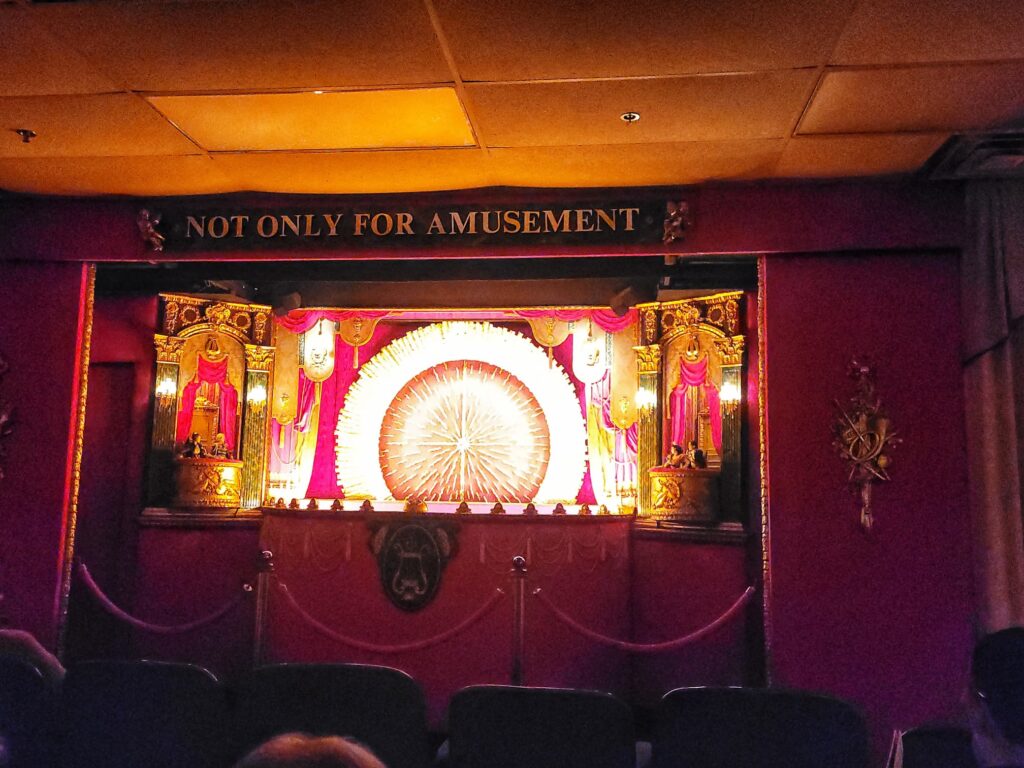
Opera in Focus Puppet Theatre
https://www.operainfocus.com/
Rolling Meadows Park District Theater
3000 Central Road
Rolling Meadows, Illinois 60008
Wednesday afternoons at 4:00 PM
Saturday afternoons at 1:30 PM
24-Hour Reservation Hotline: 773-809-3153
Adults – $14.00
Seniors (over 60) – $12.00
Children (Under 12) – $8.00
The Opera in Focus Experience
William B. Fosser’s Puppet Production Opera in Focus has a small theatre in the basement of the Rolling Meadows Park District headquarters building. All shows are matinee shows on Wednesdays at 4 pm and Sundays at 1:30 pm, but they also offer evening performances by special request. You can also reserve a show for large groups. Reservations are required before the show. Three days before the show we wanted to go to I called the 24 hr hotline and was easily able to reserve our two tickets under my name. At the show, we paid in the lobby before heading downstairs.
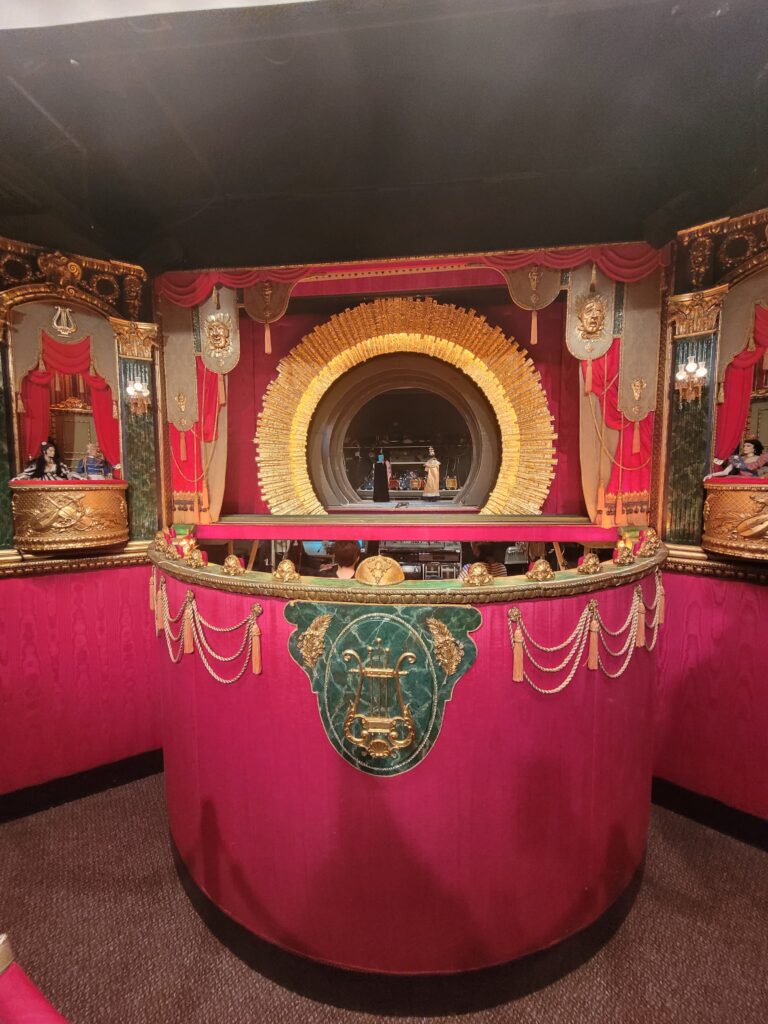
Shows average about 1 hour in length. The show changes regularly; in 2023 they performed 11 different shows! Each show usually features 3-4 acts from a famous opera and a few songs from a popular more modern musical. The theatre boasts a repertoire of over 100 different arias & scenes! Before each Act is a narration to explain what you will be seeing. Seating is first-come, first-serve and the theatre opens 30 minutes before the show starts. The Wednesday performance we went to had about a dozen people in the audience, so there was no problem finding a good seat. The theatre seats 65 people and is handicap accessible. The seats themselves were decently comfortable, especially for older theatre seats. At first they feel small, but the bottom cushion slides forward, giving you a good amount of room.
We went in October and saw the Halloween Spooktacular show! It included The Prison Scene from Faust, The Clock Scene from Boris Godunov, and four songs from The Phantom of the Opera. The show first opens with narration explaining a little about puppet opera. Then Mestro Tosci, the conductor puppet takes the stage to begin the show. Before each scene the narrator returns again to tell you a little of the story and set the mood for what you’re about to see.
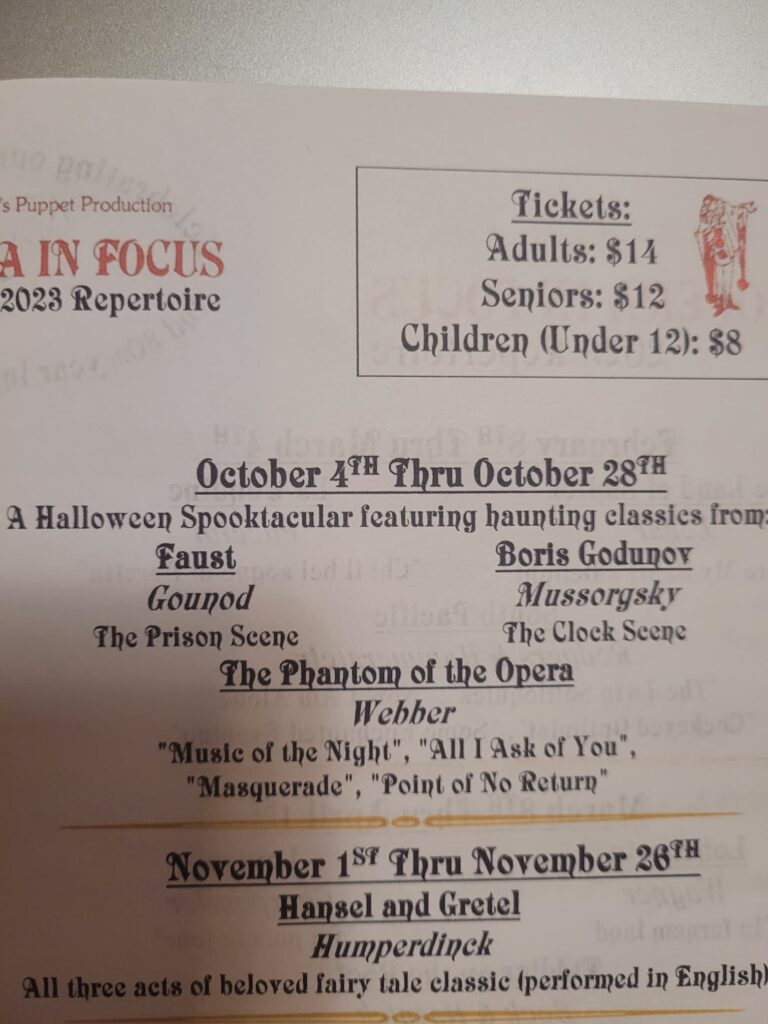
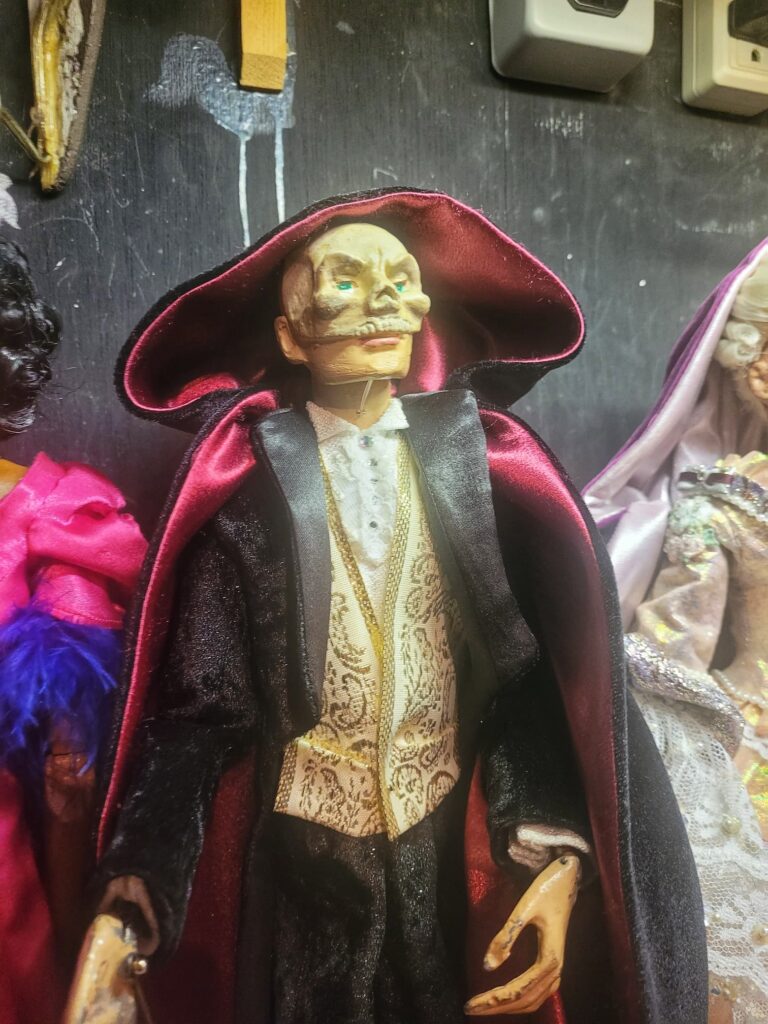
Maybe one of the best parts of the experience is that after the show the audience is invited back stage. We got to see how the puppets work, talk to the puppeteers, and explore the puppet workshop. On one hand, it could ruin the illusion, but like a lot of people, we love behind the scenes stuff, so it was very cool. The show is entirely run by volunteers and they were very welcoming and willing to answer questions.
The Puppet Opera Production
There are no marionettes at Opera in Focus. A unique type of rod puppets that are controlled from underneath the stage is used instead. A rod runs through the puppet and is accompanied by rings, pins, springs, and pulleys to control the puppet. They also each have several feet of fishing line. Some puppets are created for specific characters, but others are “changelings” that can be used for different characters by changing the costume, hair, and makeup. The one puppet that is in every show is conductor Maestro Tosci, modeled after real-life conductor Arturo Toscanini.

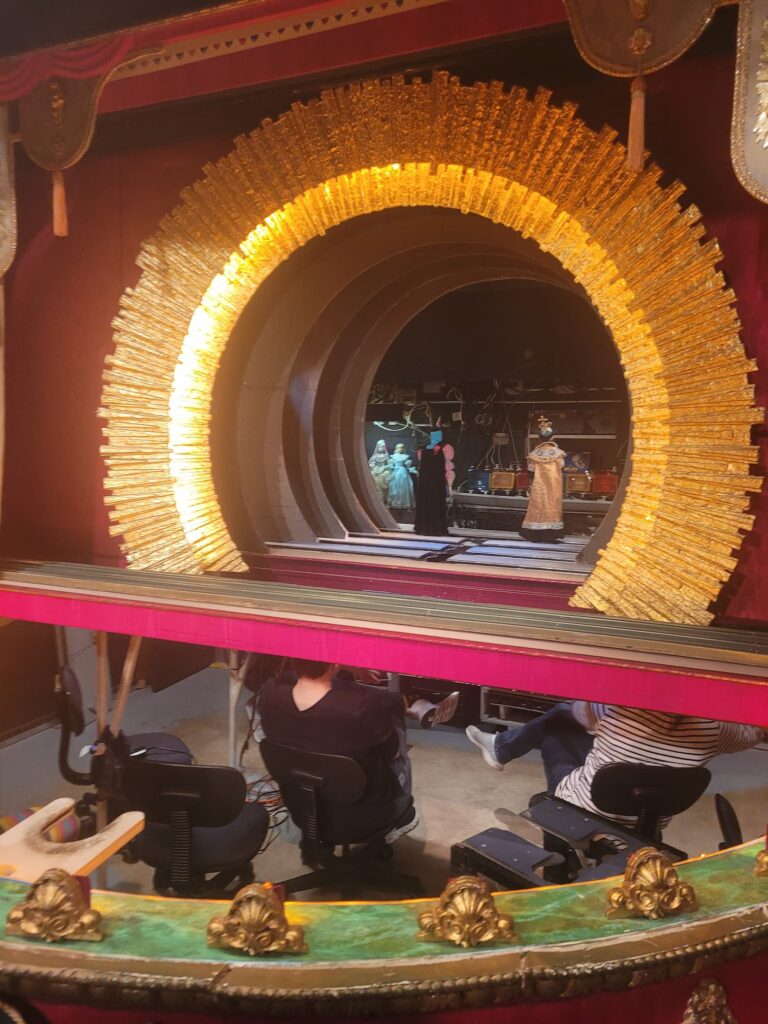
The puppeteers sit on stools that they propel with their feet to move around. They work facing the puppets and can see through the slots of the stage. They claim they don’t get back or neck pain because they are able to center their weight on the stools. Besides puppeteering, these volunteers also do all the backstage tech- there is nothing automated in the show, it is all done manually.

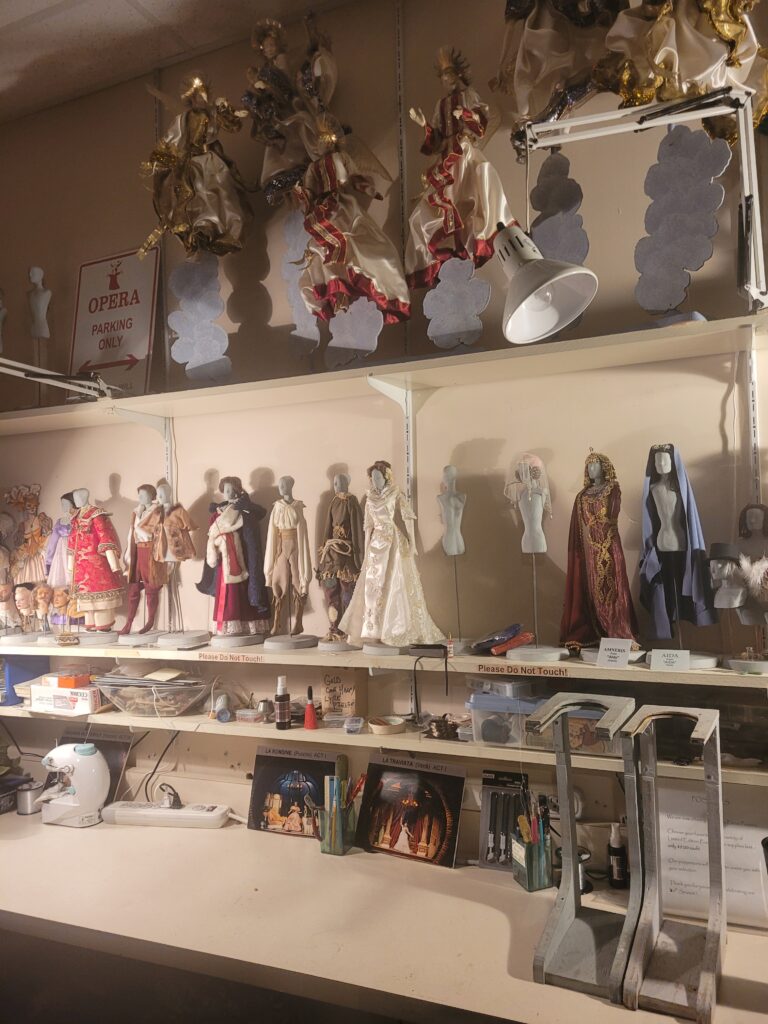
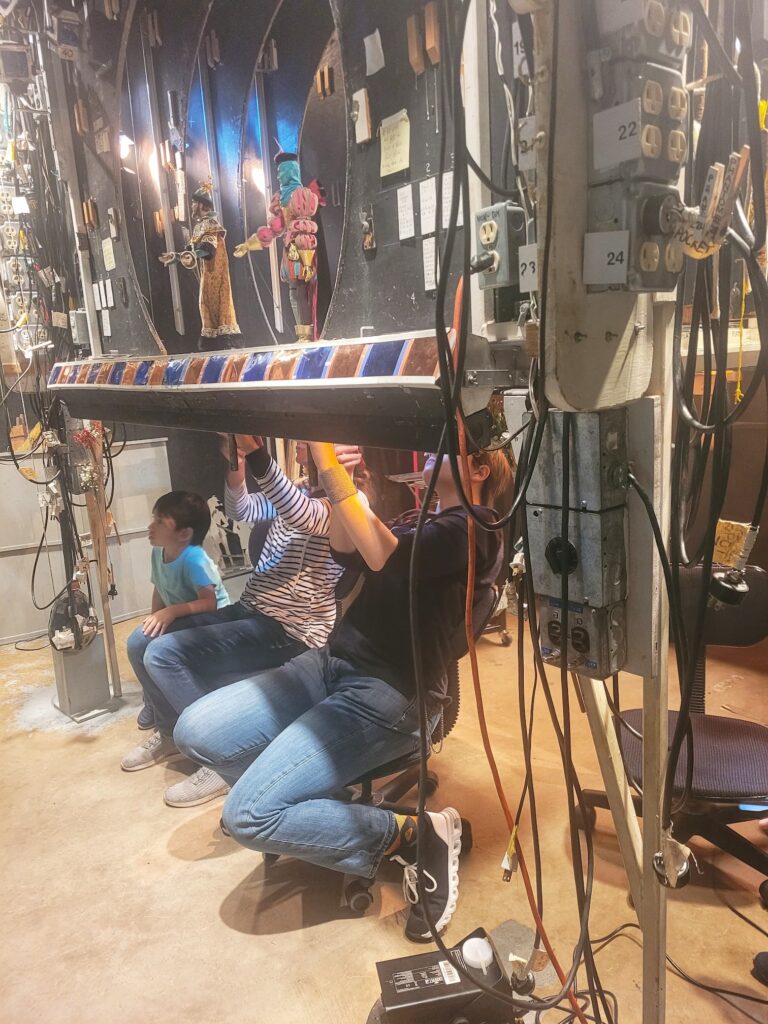
The stage is called a slot stage because it features slots that allow the puppets to move around. It’s only five feet wide and two feet deep, but the amazing set designs make it feel like a full-size theatre when you let yourself immerse in the experience. The stage design features a round opening that is meant to mimic a camera lens. Alongside the opening are miniature box seats with puppets watching the show. Look closely at the stage right box seats to find the hidden phantom- every opera has one!
The Art of Puppet Opera
The creator of Opera in Focus, William Fosser got his start at the Kungsholm- a fascinating piece of Chicago history.
A Chicago man, Ernest Wolff, and his mother founded the Chicago Miniature Opera Company in 1936. Frederick Chramer, the owner of the Kungsholm restaurant, saw one of these early performances. The Kungsholm opened in 1937 in a mansion that was originally going to be a home for part of the McCormick family. Chramer received Wolff’s permission to create the Kungsholm Miniature Grand Opera in the ballroom of the restaurant. But then he started taking credit for the idea while Wolff was away serving in the war. When Wolff returned, he sued Chramer for stealing the idea. Wolff did win the lawsuit, but the Kungsholm puppet opera still continued on until 1971.
When the Kungsholm puppet opera closed, some of the puppets made their way to the Museum of Science and Industry, some to the Swedish American Museum, and others went with William Fosser to start Opera in Focus. The show was originally performed as a travelling troupe, but in 1993 settled at the Rolling Meadows Park District. Fosser passed away in 2006, but the show lives on.




